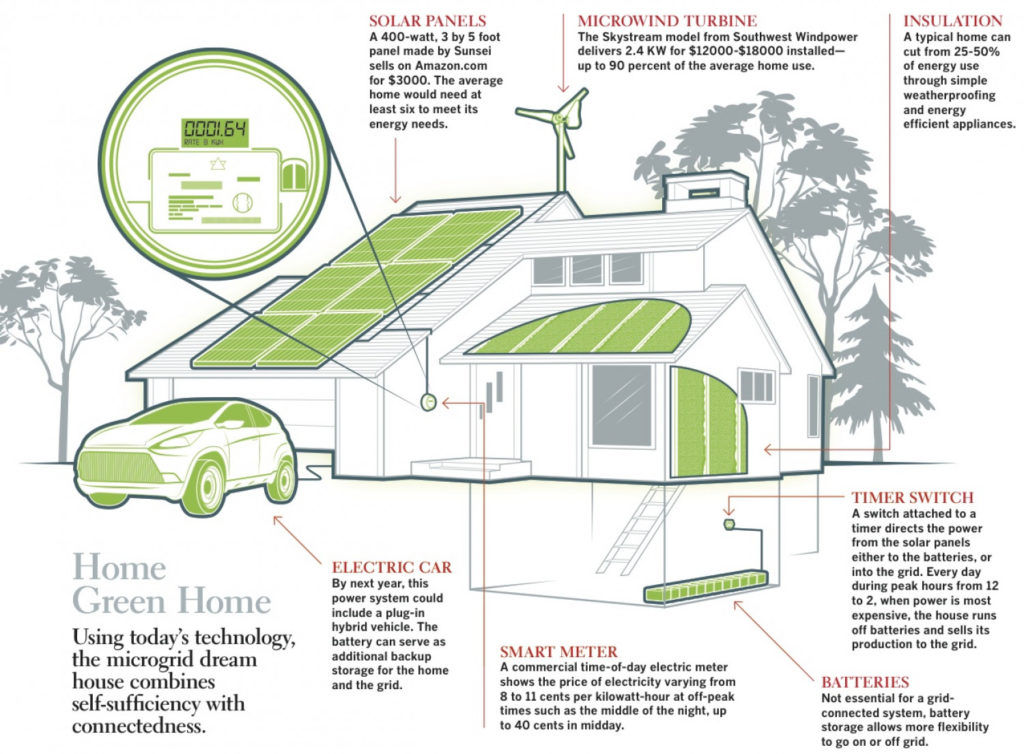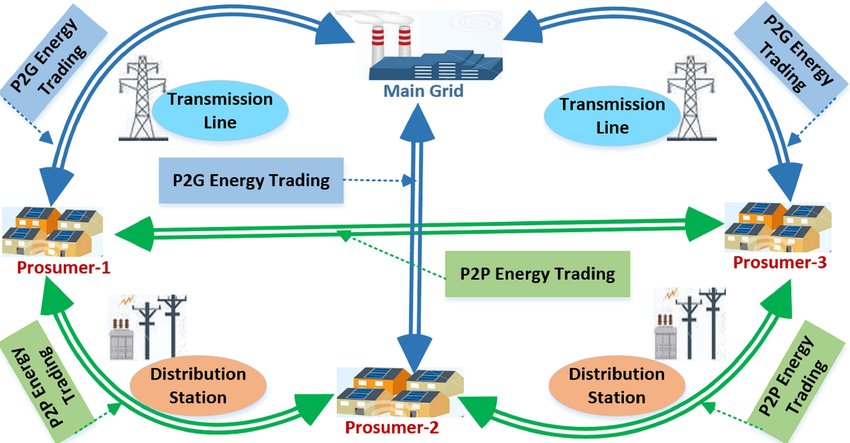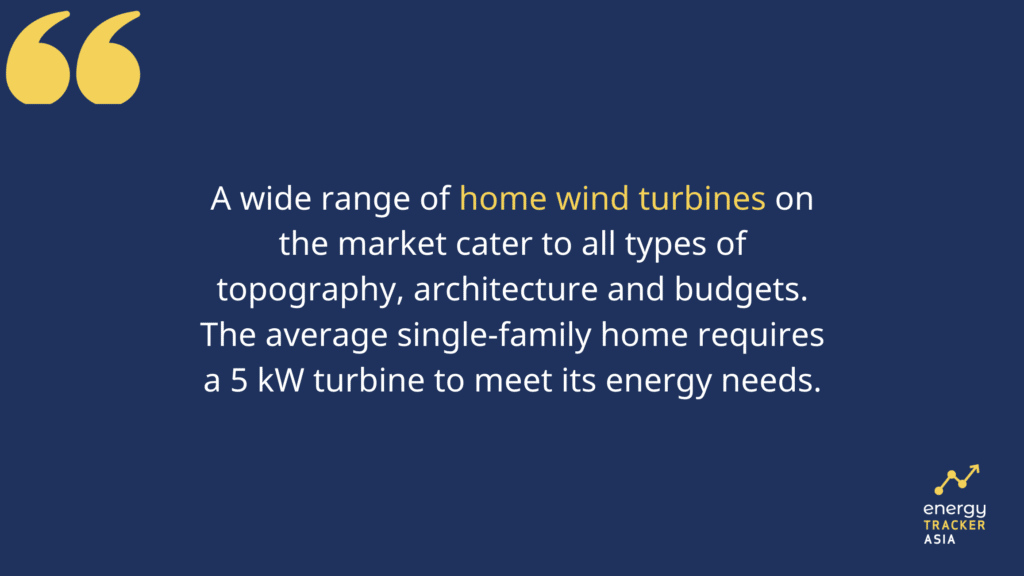Home Wind Turbines – All You Need To Know
19 August 2022 – by Eric Koons
As a result of the global shift towards reducing carbon emissions, experts are calling for unique energy solutions like decentralised power grids that allow consumers to have their own home wind turbines or solar panels. These small distributed systems are typically part of a microgrid, ideal for rural or hard-to-electrify areas.
Installing Solar Panels vs Small Wind Turbine for Home
Already one of the fastest-growing renewable energy sectors, wind turbines are expected to maintain rapid growth. While solar panels are currently the de-facto renewable power source for homeowners, home wind turbines are also starting to break into the market.
How Big of a Turbine Do You Need to Power a House?
A wide range of home wind turbines on the market cater to all types of topography, architecture and budgets. As a rule of thumb, the average single-family home requires a minimum of a 5 kW turbine to generate power and meet its energy needs – this means installing a home wind turbine with a 4m to 5.5m rotor diameter.
Wind Speeds need for Generating Wind Power
The turbine will need to be placed in an area with a strong average wind speed rating (max efficiency at 43 km/h) to generate electricity and power the home adequately and can be coupled with an energy storage system (ESS) to reduce its intermittency.

How Much Energy Can Power a Home?
However, one turbine is not likely to provide a home’s entire electricity needs. In the United States, an average household consumes between 8,000 to 9,400 kWh a year. This means a continuous energy production of 5 to 15 kW.
A single-home wind turbine will struggle to produce this. However, a system with multiple turbines, preferably with an ESS with other renewables, such as solar, is a viable option.
This mirrors a model low-carbon energy grid at a national or international level.
Are Home Wind Turbines Cost-effective?
The effectiveness of a home wind turbine is wholly dependent on location. Elevation, surrounding topography, climate patterns and property orientation are all key considerations. Additionally, the home itself impacts efficiency, namely insulation.
All factors considered, domestic wind turbines can be one of the most cost-effective systems on the market and can lower energy bills considerably. Furthermore, the most expensive aspect of installing a turbine remains the upfront purchasing cost, with little maintenance needed and a relatively long operational life.
Best home wind turbines can provide a return on investment reasonably quickly. They are also equipped with maximum power point tracking (MPPT). There are schemes and funding mechanisms that governments offer to incentivise homeowners.
How Much Does a Home Wind Turbine Cost?
The price for a home wind turbine varies considerably based on each home’s needs and power generation.
Small wind turbines, which are used only as a background power source with little overall output, can cost several hundred dollars. Larger turbines capable of powering a large portion of the household’s energy demands will cost between USD 3,000 and USD 8,000. The largest home wind turbine kit installations for complete energy independence, or a business, can run over USD 50,000 for the turbines and installation.
How Does This Compare to Home Solar and Utility-scale Energy?
The upfront costs for wind energy can be high, but they remain on par with home solar. The costs can range between USD 3,500 and USD 35,000.
Experts recommend mixing both forms of renewable energy to maximise investment and ensure near-continuous power production. Combined with an ESS, this setup can make a home self-reliant from the energy grid.

With the rising cost of utilities, especially natural gas, decentralised grids and home-based energy systems can be a worthwhile investment.
What Other Additional Infrastructure Is Needed for a Rooftop Wind Turbine?
As previously discussed, an ESS is an essential infrastructure addition. A rooftop wind turbine can function without one, but the ESS will reduce intermittency and ensure the household maximises efficiency.
Storing energy can also help with transmission to an energy grid. In a microgrid setup, homeowners can sell excess energy to their neighbours. In a centralised grid, they can further reduce their energy bills by selling electricity back to the energy provider to offset costs.

Residential Wind Turbines – Driving Distributed Energy Systems
Wind energy is competing with solar in demand and is drawing interest in home usage. While initially expensive, a residential wind turbine can pay itself off over its lifetime. You can also offset costs with government credits or subsidies.
The flexibility, versatility and low operating costs of wind turbines make them an attractive energy option, especially when paired with energy storage systems. Additionally, they are an excellent option for rural and remote areas that require decentralised local grids for electricity and energy independence.
Renewable energy will power the future. Wind power will be critical in the current low-carbon transition, and home turbines provide homeowners with an opportunity to get ahead of the curve and reduce their impact and bills.

by Eric Koons
Eric is a passionate environmental advocate that believes renewable energy is a key piece in meeting the world’s growing energy demands. He received an environmental science degree from the University of California and has worked to promote environmentally and socially sustainable practices since. Eric’s expertise extends across the environmental field, yet he maintains a strong focus on renewable energy. His work has been featured by leading environmental organizations, such as World Resources Institute and Hitachi ABB Power Grids.
Read more